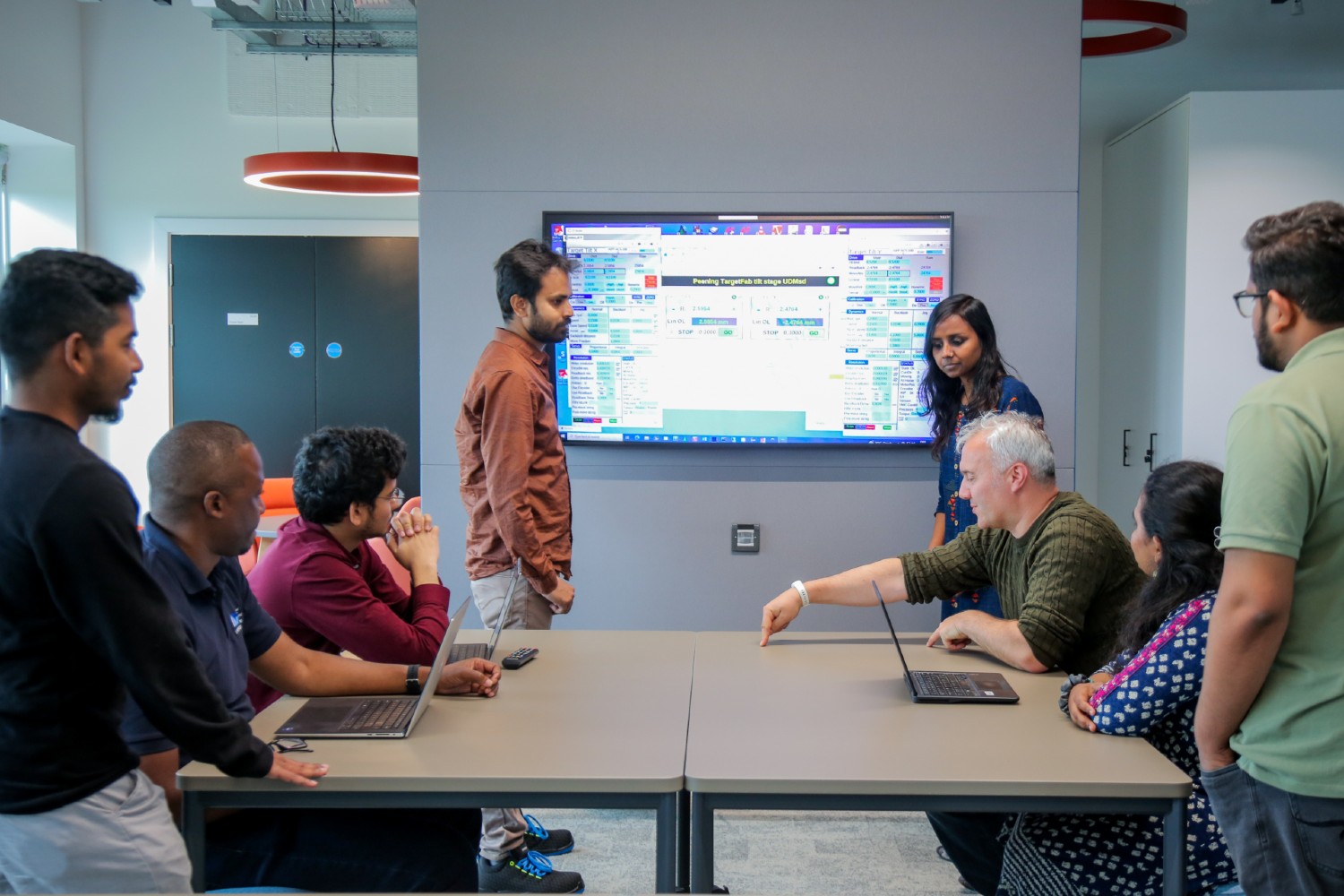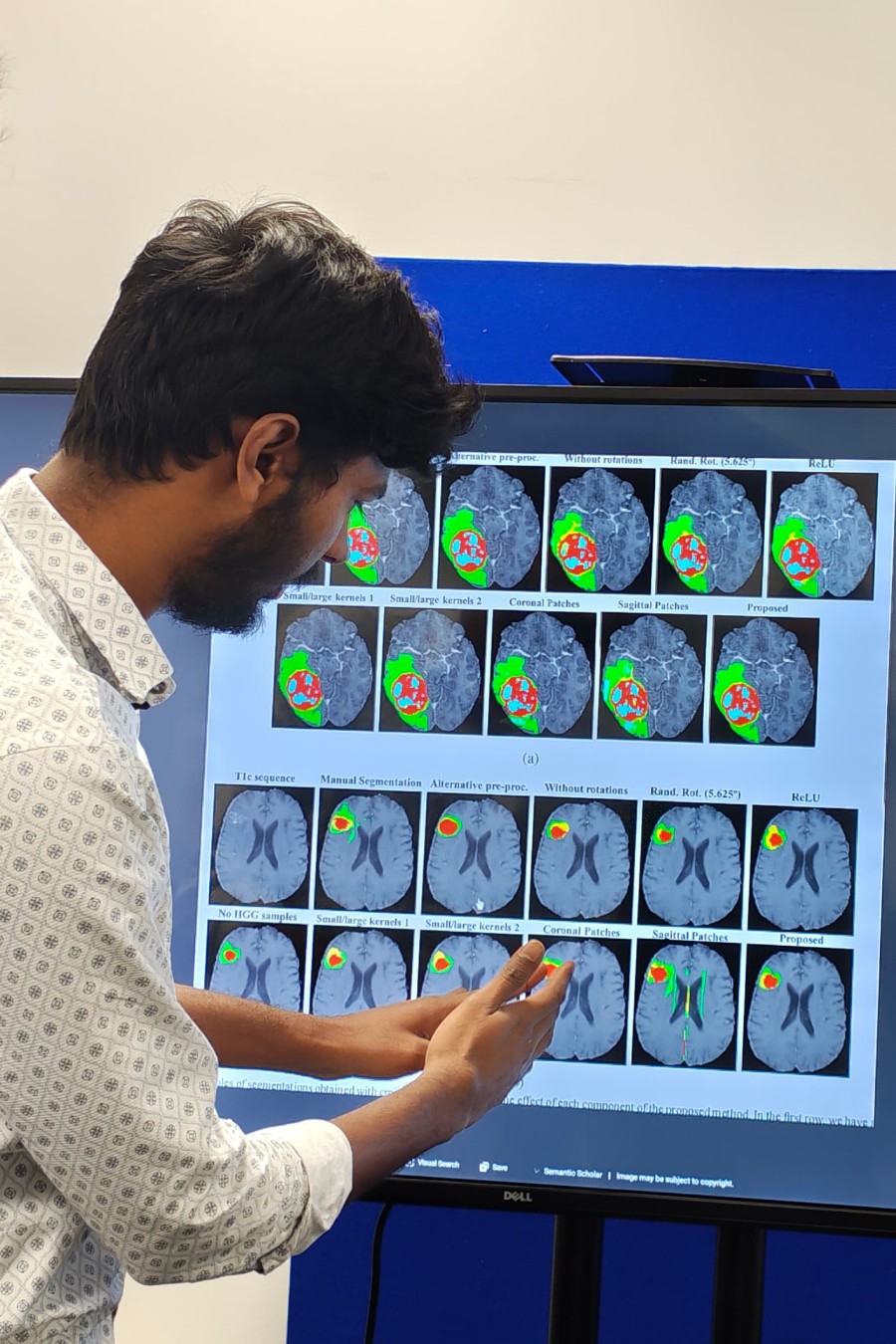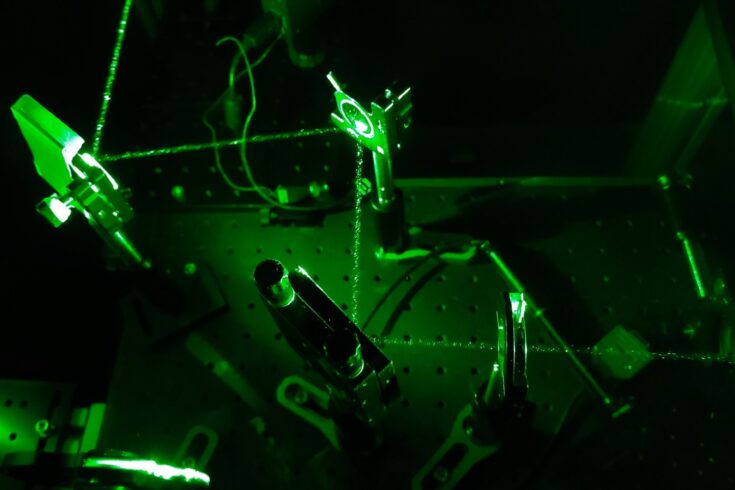Particle accelerators have deepened our understanding of the world and led to the development of life-saving technologies, like medical imaging Positron Emission Tomography scans. Yet their huge size and vast cost mean very few scientists have access to them, slowing the progress of promising new discoveries.
Unlocking new possibilities with laser acceleration
EPIC is a UK-India collaboration that set out to change this. The team has developed a new type of laser technology that uses compact plasma-based systems. This approach creates the same level of particle acceleration in just centimetres instead of kilometres.

Group of engineers sitting at a table. Credit: Extreme Photonics Innovation Centre
Dr Rajeev Pattathil of the UK’s Central Laser Facility, part of the Science and Technology Facilities Council (STFC), explained:
This breakthrough makes accelerator technology smaller, more affordable and accessible, unlocking vast potential for applications across universities, incubators, hospitals, and industry.
Transformative applications: from cancer detection to engineering safety
Now, the potential for real-world applications is immense. EPIC has been exploring how biomedical imaging techniques could support early cancer detection in collaboration with Tata Memorial Hospital, the largest oncology centre in Asia. Another application is deploying laser-driven accelerators to improve safety by quickly identifying nano-cracks in turbine engines.

Man looking at images of a brain. Credit: Extreme Photonics Innovation Centre
This leap forward in accelerator technology was the result of funding from STFC and support from India’s Department of Atomic Energy. The collaboration turned what was an informal partnership between scientists in the UK and India into a fully-fledged research centre for collaborative research and information exchange.
Scaling innovation and sharing knowledge
The team’s goal is to quickly share this technology with the scientific community, expand applications and scale its use.
Professor G Ravindra Kumar, Distinguished Professor at TIFR, said:
We should not only look at first-rate science, but how first-rate science leads to great technology and innovation. I’m not talking about innovations which are incremental, but innovations which stand on their own as first leaps into a new direction.
Find out more
Watch our video on the UK-India EPIC story: Thriving through research and innovation.

